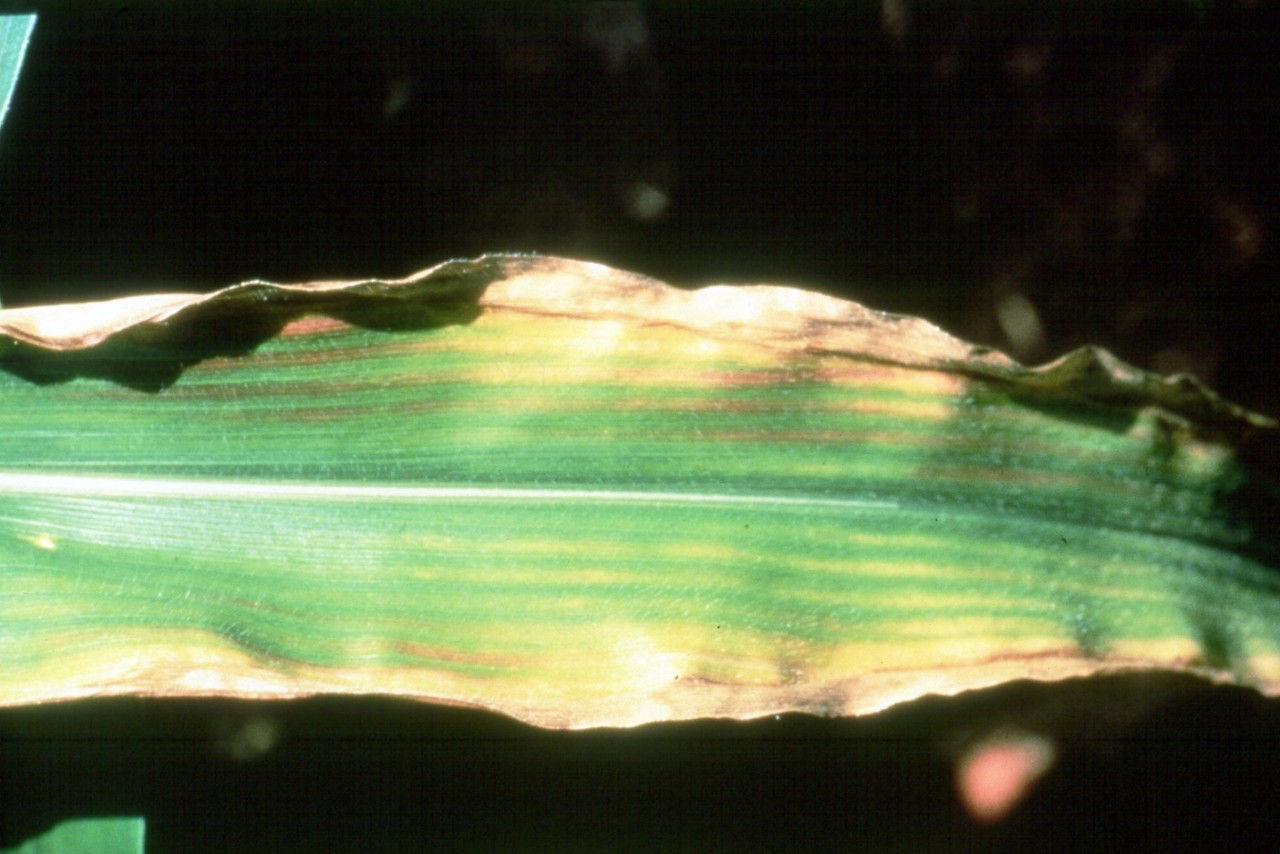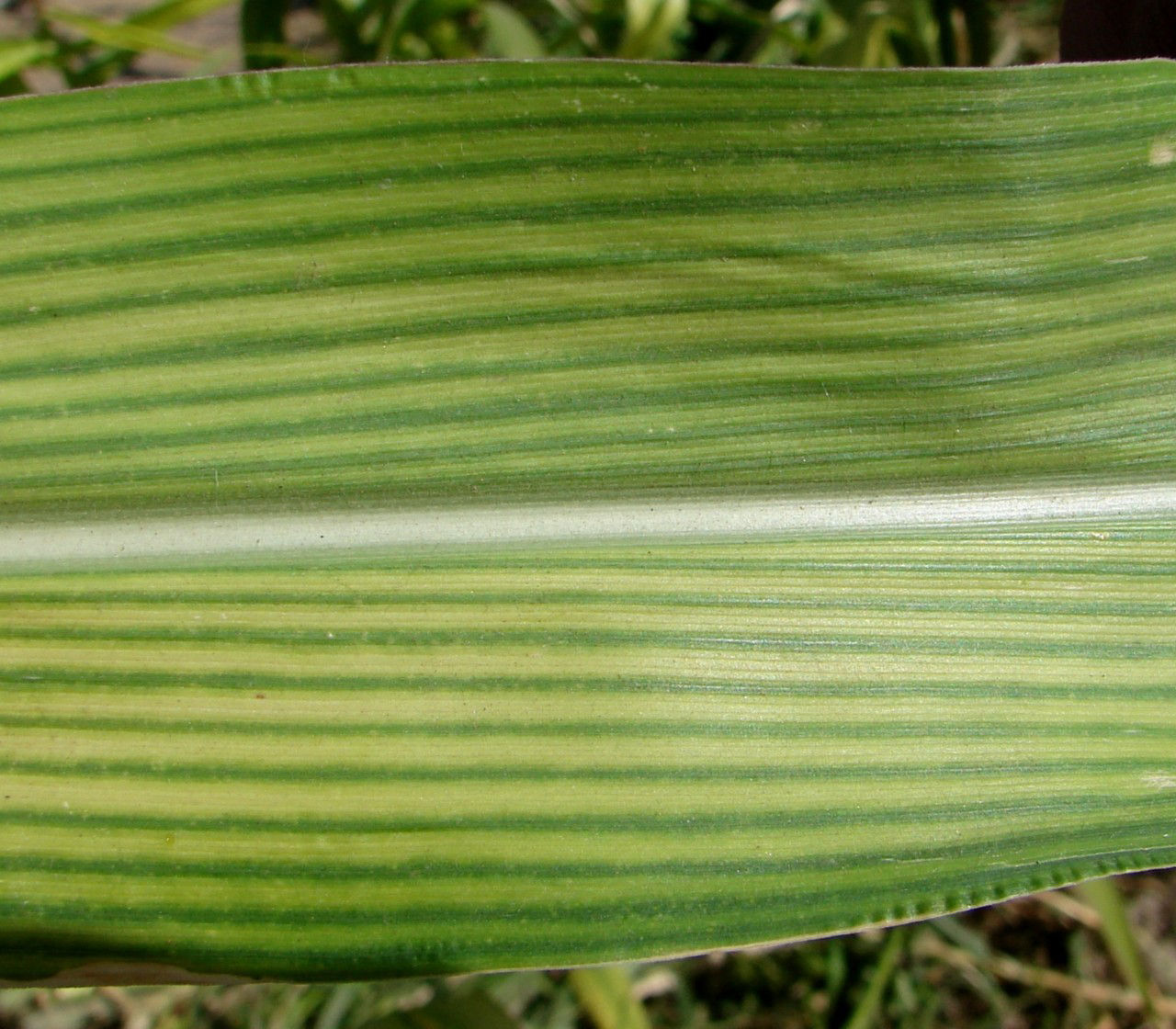5 MIN READ
Causes and Management of Yellow Corn Seedlings
March 5, 2023
KEY POINTS
- Yellowish leaves or interveinal leaf striping early in the season is generally caused by reduced nutrient uptake due to restricted root growth.
- Restricted root growth can result from cool air and soil temperatures, saturated or compacted soils, and root damage.
- Yellowing during V3 and V5 growth stages is usually temporary as the plant switches from using nutrients from the seed and seminal roots to the nodal root system.

Yellow corn seedling.
Several factors can contribute to yellow (chlorotic) corn seedlings. In most cases, this is the result of poor growing conditions, but in some cases, it can be the result of root injury or root growth restriction. Root growth can be slowed by cool growing conditions, impacting the above portion of the plant. Saturated soils may restrict oxygen from the roots, resulting in yellow plants. Compaction, from the side wall not collapsing during planting because of wet planting conditions can restrict root growth. Root injury can also occur from root feeding insects, diseases, fertilizer applications, or herbicides. Injured roots, regardless of cause, can reduce the plant’s ability to uptake nutrients, such as nitrogen (N), potassium (K), iron (Fe), zinc (Zn), and sulfur (S) resulting in a chlorotic (yellowing) condition.
- Nitrogen deficiency causes the older leaves of the corn plant to turn pale or yellowish green as N is moved from them to newer growth. The deficiency then starts to create a V shape, starting at the tip of the leaf.
- Potassium deficiency may increase the impact of early season frost, disease, and drought (Figure 1). Potassium plays an important role related to plant defense and water regulation. Potassium deficiency exhibits at first as yellowing of the leaf tips on lower leaves as it is mobile in the crop. Yellowing will progress down the margins eventually turning brown. Sidewall compaction, which occurs when crops and planted into wet soil, can also reduce root growth and cause potassium deficiency early in the growing season, even when soil levels of potassium are sufficient.
- Zinc-deficient plants exhibit interveinal chlorosis on the upper leaves. The veins, midrib, and leaf margin remain green. As the deficiency intensifies, bands (or “stripes”) develop on either side of the midrib and the leaves may turn almost white. Under severe Zn deficiency the plant may be stunted (Figure 2).

Figure 1. Potassium deficiency symptom on corn.

Figure 2. Zinc deficiency symptom.
- Sulfur deficiency symptoms can range from interveinal chlorosis to a general yellowing of young leaves. As S is not as easily mobilized within the plant, younger leaves show the visual symptoms first (Figure 3).

Figure 3. Sulfur deficiency symptom.
- Iron deficiency can cause upper leaves to be pale green between the veins (Figure 4). It is more common on high pH and calcareous soils.

Figure 4. Iron deficiency symptom.
Impact on Yield
Yellowing of plants between the V3 and V5 growth stages can be quite common in many years and is a result of transitioning from being dependent on the seed and seminal roots to provide energy to photosynthesis and nutrient uptake from the nodal roots. In most cases, the roots are not completely developed, resulting in a yellowing of the leaves. Yellowing during these growth stages, usually diminish as the nodal roots increase in size. If the yellowing is widespread across many fields in the same general area, this is most likely the cause.
However, if the roots are restricted from compaction or damaged by insects, diseases, or chemicals the plants may not recover. Soil warming encourages microbial activity and breakdown of organic material, which releases additional nutrients that can help plants recover from a nutrient deficiency. Deeper root growth could allow roots to reach water-soluble nutrients, such as S and N, that may have leached deeper into the soil with wet conditions. As soils dry out from saturation, oxygen content can increase and allow for better plant growth.
Management Options
The root cause of symptoms needs to be determined to implement a remedial tactic. However, unless the cause is a nutrient deficiency, there are minimal options for remediation. If it is a nutrient deficiency, the appropriate nutrient can be applied. If it is another issue, it can only be addressed in the following season.
Sources:
Culman, S. and Thomison, P. 2015. Purple and yellow corn, What is going on? Ohio State University Extension. https://agcrops.osu.edu/newsletter/corn-newsletter/2015-14/purple-and-yellow-corn-what-going
Sawyer, J. 2011. Yellow corn plants. Iowa State University Extension. https://crops.extension.iastate.edu/cropnews/2011/06/yellow-corn-plants
Nielsen, B. 2010. Corn and the ugly duckling. Purdue University Extension. https://www.agry.purdue.edu/ext/corn/news/timeless/UglyDuckling.html
1211_57801